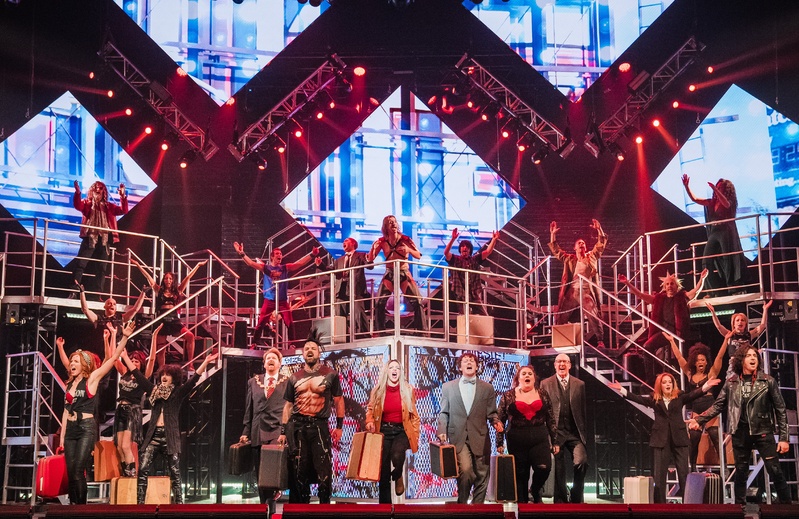A production of “Rock of Ages,” a definitive musical originating on Broadway that opened earlier this year at Toronto’s Elgin Theatre, is supported by sound designer John Lott and a system utlizing a variety of Lectrosonics components for “all things wireless,” including a host of SSM transmitters on most cast members and an LT pack on guitar, Venue and Venue2 receiver frames with VRT modules as well as an Aspen DSP audio processing system serving as a monitor matrix.
Radio frequencies are coordinated using Wireless Designer software. Lott, who cut his teeth with several Andrew Lloyd Webber theatre productions, shares the unique challenges of sound for live musical theater.
“Today’s theater audiences expect to hear live-action cinema, with everything crystal clear and right in your face,” he says. “For a movie or TV series, you can spend hours in post getting that exactly right. In theater, you get maybe five kicks at the can before you have a public audience. Everything is real-time, and there are a lot of variables.”
On the mixing side, this means getting as much scene-by-scene programmability as possible out of a digital console to accommodate, “The entire state changing, sometimes 10 times in the course of a single song,” Lott explains. On the wireless side, key factors include audio fidelity, RF performance, and accurate frequency coordination.
“There are 42 channels of Lectro on the talent, plus two handheld mics, plus four sets of in-ear monitors, and then six channels of wireless comms,” he says. “There’s a whole 1,000-seat venue above us. Then there’s Harry Potter a couple of doors down using something like 100 frequencies. So, it’s pretty saturated.
“We do a scan every day just to make sure no RF surprises have popped up,” he continues. “We keep a spare receiver so we can scan during the show without any chance of affecting the show.”
Engineers and crew also need to know the RF status of every cast member, and listen in, which is where Aspen comes in. Lott: “Aspen is an automated matrixing, routing, and DSP mixer-processor box. We’re employing it as our onstage wireless monitoring rig. Using an iPad app, you can dial up cue mixes, individual mics or combinations, and so on. Headphones and displays are set up behind stage left and stage right for the backstage crew, so if a mic gets knocked out of place or someone’s SSM battery is low, they can fix it at the first opportunity.”




















